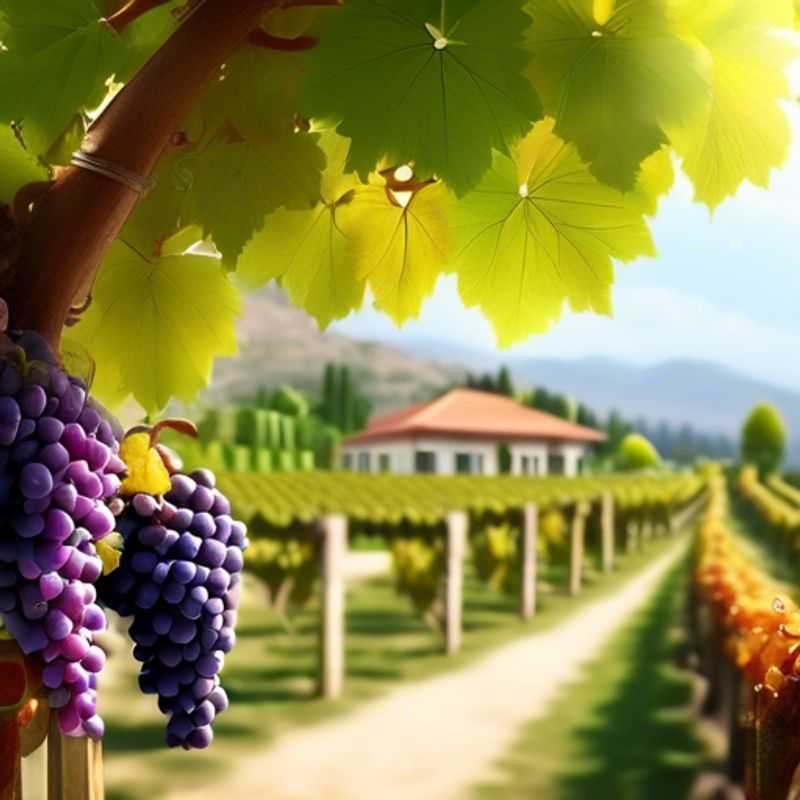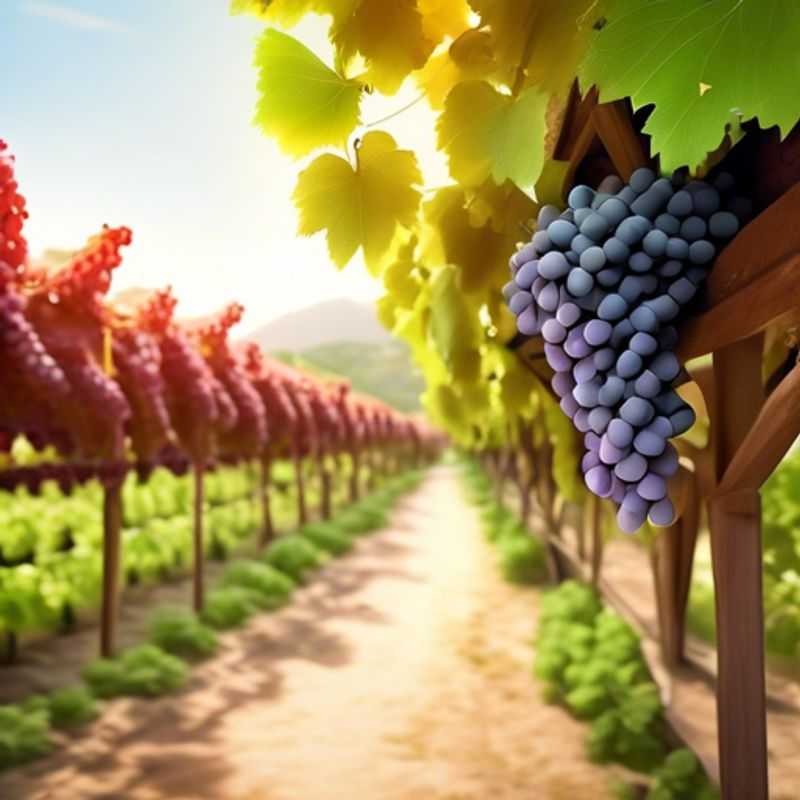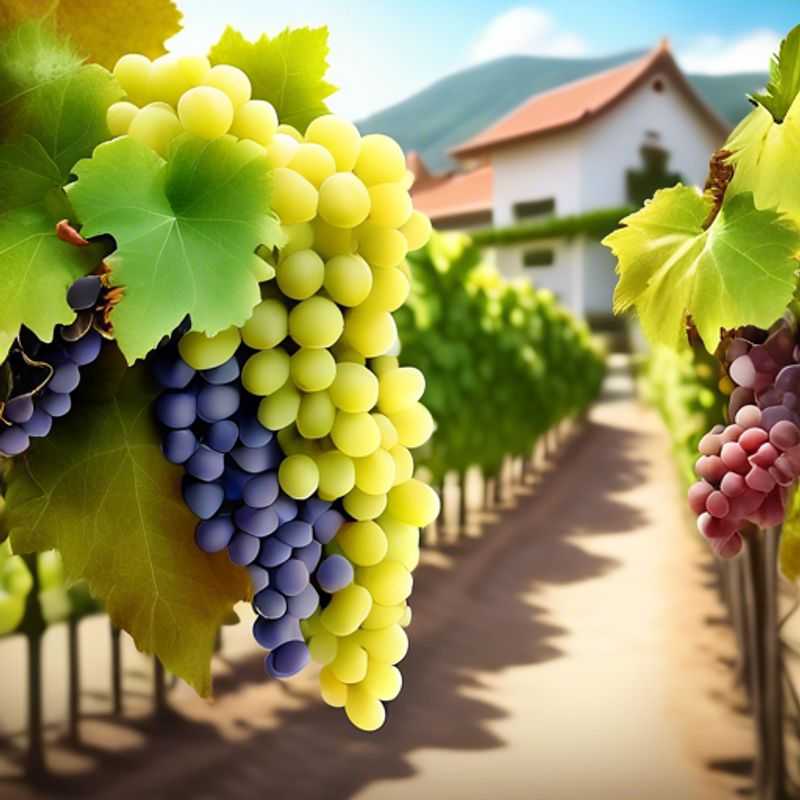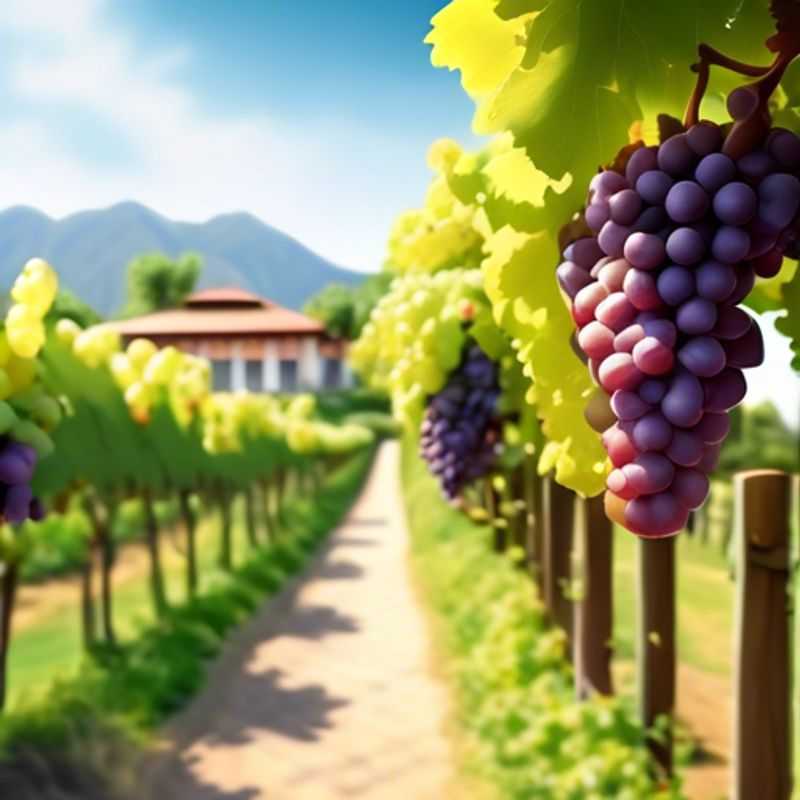Top Things to Know Before Buying Grapes for Your Garden

Top Things to Know Before Buying a Grape Garden: A Deep Dive into Success
When considering a grape garden, it's essential to understand the different grape varieties and their unique characteristics, as this knowledge will help you choose the best type for your culinary and environmental needs. Researching the optimal growing conditions for grapes in your area is also crucial, as different regions may require specific care and attention to thrive.
Additionally, assess the size of the grape garden you can realistically maintain. This will ensure that you can provide the necessary care without becoming overwhelmed. Investing in quality grape vines from a reputable nursery or supplier is another important step, as healthy vines lead to a fruitful harvest.
Moreover, learning proper grape pruning and training techniques can significantly improve your yield and the quality of your grapes. It's also vital to be prepared to provide adequate water, nutrients, and pest control to support your vines throughout their growth cycle.
Finally, familiarize yourself with the harvesting and storage process for grapes, ensuring that you can enjoy the fruits of your labor long after the harvest season. By following these guidelines, you can cultivate a thriving grape garden that yields delicious results.

Uncorking the Mysteries: A Guide to Grape Varieties and Their Unique Characters
Understanding grape varieties is essential for any wine enthusiast. Each variety possesses unique characteristics that influence the final wine's flavor profile, color, and body. Here's a quick guide to some prominent grape varieties:
Cabernet Sauvignon is a robust red grape known for its full body, dark fruit flavors, and high tannins. It's often blended with other grapes like Merlot and Cabernet Franc. Merlot is another popular red grape known for its softer tannins, juicy fruit flavors, and smooth finish. It often exhibits notes of plum, cherry, and chocolate.
Chardonnay is a versatile white grape that can produce wines ranging from crisp and refreshing to rich and buttery. Its flavor profile often includes notes of apple, pear, citrus, and vanilla. Sauvignon Blanc is another popular white grape known for its crisp acidity, grassy notes, and aromas of citrus and gooseberry.
Pinot Noir is a delicate red grape known for its light body, earthy flavors, and elegant structure. It often exhibits notes of cherry, strawberry, and spice. Zinfandel is a red grape known for its high alcohol content, bold flavors, and vibrant fruitiness. It can produce wines ranging from fruity and jammy to spicy and complex.
These are just a few examples of the many grape varieties grown worldwide. The best way to learn about different grapes is to taste them and discover your personal preferences. With a little exploration, you can become a knowledgeable wine enthusiast and appreciate the diversity of the world's vineyards.

Cultivating Success: Unlocking the Secrets of Grape Growing in Your Region
To ensure a successful grape harvest, understanding the optimal growing conditions for your specific area is paramount. The key factors you need to consider are climate, soil, and water.
Climate plays a crucial role. Grapes require a sufficient amount of sunlight, typically 6-8 hours daily, and a growing season with temperatures ranging from 60-85°F (15-30°C). It's vital to note that specific grape varieties have varying temperature tolerances. For instance, Vitis vinifera, the most widely cultivated variety, thrives in warm climates, while Vitis labrusca, commonly found in colder regions, can tolerate colder temperatures.
Soil composition and drainage are equally important. Grapes thrive in well-drained soils with good aeration. Sandy loam and clay loam are ideal, offering the right balance of water retention and drainage. It's advisable to have your soil tested to determine its pH level, which should ideally be between 6.0 and 6.5.
Water is essential for grape growth, but it's crucial to avoid overwatering, as it can lead to root rot. A consistent, moderate watering schedule is key. The frequency depends on your climate and soil type. Drip irrigation is a highly recommended method for efficient water management.
Determining the ideal growing conditions for your specific location requires careful research and observation. Consulting with local agricultural extension offices, local grape growers, and online resources dedicated to grape cultivation can provide valuable insights and tailored guidance. It's always a good idea to start small, experiment with different varieties, and monitor your plants closely to understand their specific needs. With the right knowledge and dedication, you can create the perfect environment for growing healthy, delicious grapes right in your own backyard.

Sizing Up Your Grape Garden: A Realistic Approach to Vineyard Management
When planning a grape garden, the most important factor is to determine the size you can realistically maintain. The size of your garden should be balanced against your time, resources, and physical abilities. A manageable garden is a rewarding one!
Start with a realistic assessment of your available time. How much time can you dedicate to tending your grapes? Consider tasks such as weeding, watering, pruning, pest control, and harvesting. Be honest with yourself, and don't overestimate your available time.
Next, consider your physical abilities. Grapevines can be heavy, and pruning can be physically demanding. If you have any physical limitations, be sure to factor these in when planning your garden size.
Another important factor is the cost. Grapevines, soil, and irrigation systems can all be expensive. Consider the initial investment, as well as ongoing costs for fertilizer, pest control, and other supplies. Be prepared to make a budget and stick to it.
Finally, consider the space available. Grapevines need adequate spacing for optimal growth and fruit production. Research the specific grape varieties you want to grow and determine their spacing requirements.
Once you have a good understanding of your time, resources, and physical abilities, you can start to plan the size of your grape garden. Remember, a smaller, well-maintained garden is much more rewarding than a large, neglected one!

The Foundation of a Great Harvest: Invest in Quality Grape Vines
Investing in quality grape vines from a reputable nursery or supplier is crucial for a successful vineyard. It's like laying the foundation of a house – if the base is weak, the entire structure will suffer.
Why quality matters? Healthy vines with strong root systems are resistant to diseases, pests, and harsh weather conditions. They produce better yields, higher quality grapes, and ultimately, better wine.
Where to buy? Reputable nurseries and suppliers offer certified, disease-free vines. They also provide expert advice on choosing the right varieties, planting techniques, and ongoing vineyard management. You can find these nurseries online or through local agricultural organizations.
What to consider when buying? Look for vines with vigorous growth, healthy foliage, and well-developed root systems. Ask about the nursery's certification programs, disease control measures, and any warranties offered.
Cost factors: The cost of grape vines can vary significantly depending on the variety, age, size, and quantity ordered. Consider these costs when planning your budget:
1. Vine purchase: The price per vine, depending on the variety and age.
2. Shipping: Shipping costs can be substantial, especially for large orders.
3. Planting materials: This includes stakes, trellising materials, and other vineyard establishment supplies.
4. Labor: The cost of planting, training, and maintaining the vines.
5. Pest and disease control: Preventive measures and treatments for common vineyard issues.
Remember, investing in high-quality grape vines is an investment in the future of your vineyard. It pays off in the long run through healthier vines, higher yields, and ultimately, superior wine production.

Unlocking the Secrets to Grapevine Pruning and Training
Pruning and training are essential for maximizing grapevine health and yield. It involves removing unnecessary growth and shaping the vine for optimal sun exposure and fruit production. The key is to balance removing excess growth while maintaining enough leaves for photosynthesis.
There are two main pruning periods: dormant pruning (winter) and summer pruning. Dormant pruning removes old and diseased wood, shaping the vine for the upcoming season. Summer pruning focuses on removing excess shoots and leaves, promoting air circulation and improving fruit quality.
Training techniques guide the vine’s growth, ensuring proper sunlight exposure and fruit development. Common methods include cane pruning, spur pruning, and cordon training. Each technique has specific advantages depending on the grape variety and growing conditions.
Proper pruning and training require knowledge of grapevine biology and growth patterns. Vineyard management practices like soil fertility, irrigation, and pest control are also crucial.
If you're new to grape pruning, seeking guidance from experienced growers or local agricultural experts is highly recommended. Online resources and books provide detailed information, but hands-on training is invaluable for understanding the nuances of grapevine care.

Nurturing Growth: Providing Water, Nutrients, and Pest Control
Properly caring for your plants involves providing them with the essential elements they need to thrive: water, nutrients, and protection from pests. Let's delve into each of these areas.
Water: Every plant has its own water needs. Some plants are thirsty and need frequent watering, while others prefer drier conditions. It's vital to understand your plant's water requirements to avoid overwatering or underwatering. Overwatering can lead to root rot, while underwatering can cause wilting and stress. Observe the soil moisture and adjust watering frequency as needed. Consider using a moisture meter or your finger to check the soil dryness.
Nutrients: Plants require a variety of nutrients to grow. These nutrients are absorbed from the soil. You can provide these nutrients through fertilizers. Choosing the right fertilizer depends on the specific needs of your plants. Some common fertilizers include:
• Granular fertilizers: These are slow-release fertilizers that are applied to the soil.
• Liquid fertilizers: These are quickly absorbed by the plant and are often used during the growing season.
• Organic fertilizers: These are derived from natural sources like compost, manure, or bone meal.
Pest Control: Plants are susceptible to various pests such as insects, diseases, and weeds. Identifying these early on and taking appropriate action is crucial.
• Inspection: Regularly inspect your plants for signs of pests or diseases. This can help you catch issues early on before they become major problems.
• Prevention: Healthy plants are more resistant to pests.
• Treatment: If you find pests, there are many different treatment options available, including insecticidal soap, neem oil, and organic pest control methods.
Remember, caring for your plants requires a holistic approach. By providing them with the right amount of water, appropriate nutrients, and protection from pests, you can ensure they flourish and bring joy to your garden or home. If you have any specific questions about caring for your plants, consulting with a local gardening expert or researching online resources can be helpful.

From Vine to Bottle: A Journey into Grape Harvesting and Storage
Grapes, the beloved fruit that graces our tables and wine glasses, undergoes a fascinating journey from vine to storage. Understanding the harvesting and storage process is crucial for preserving the quality and flavor of these precious fruits.
Harvesting is a meticulous process, often done by hand to ensure optimal quality. The timing is crucial, as grapes reach their peak ripeness at different times depending on the variety and climate. Once harvested, the grapes are sorted to remove any damaged or diseased fruit.
Storage of grapes is a delicate matter, as they are susceptible to spoilage. Ideally, grapes should be stored at temperatures between 32°F and 36°F (0°C and 2°C) with high humidity. Refrigerated storage is the most common method, ensuring that the grapes remain fresh and flavorful for an extended period.
Proper handling and storage are essential for maintaining the quality of grapes. To prevent bruising, grapes should be handled gently and stored in a single layer. Maintaining a cool and humid environment is vital for preventing dehydration and spoilage.
Cost Considerations: While harvesting may involve labor costs, storage requires ongoing expenses for refrigeration, humidity control, and energy consumption. Depending on the scale of operations, these costs can vary significantly.
The journey of grapes from vine to storage is a testament to the meticulous care and scientific understanding that goes into ensuring the quality of this versatile fruit.
